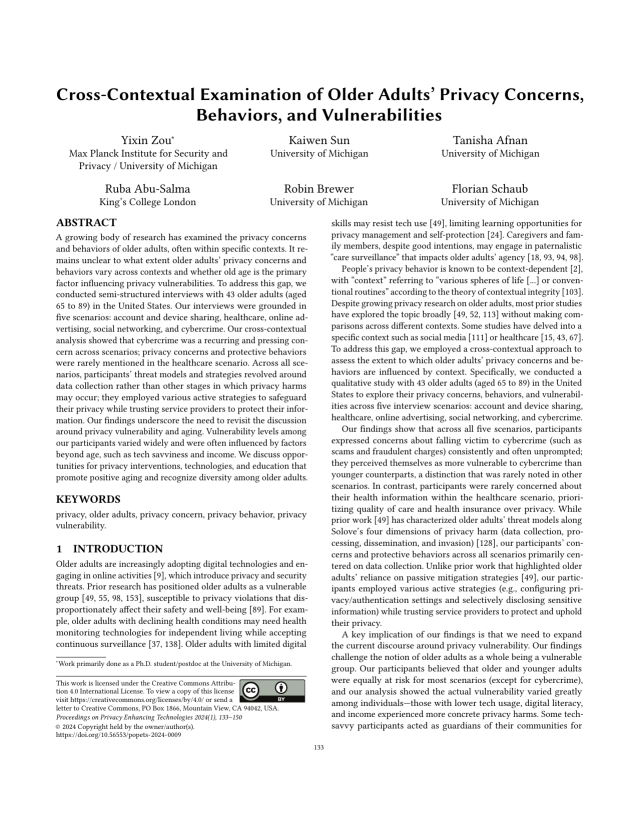Cross-Contextual Examination of Older Adults' Privacy Concerns, Behaviors, and Vulnerabilities
Authors: Yixin Zou (Max Planck Institute for Security and Privacy), Kaiwen Sun (University of Michigan), Tanisha Afnan (University of Michigan), Ruba Abu-Salma (King's College London), Robin Brewer (University of Michigan), Florian Schaub (University of Michigan)
Volume: 2024
Issue: 1
Pages: 133–150
DOI: https://doi.org/10.56553/popets-2024-0009
Abstract: A growing body of research has examined the privacy concerns and behaviors of older adults, often within specific contexts. It remains unclear to what extent older adults' privacy concerns and behaviors vary across contexts and whether old age is the primary factor influencing privacy vulnerabilities. To address this gap, we conducted semi-structured interviews with 43 older adults (aged 65 to 89) in the United States. Our interviews were grounded in five scenarios: account and device sharing, healthcare, online advertising, social networking, and cybercrime. Our cross-contextual analysis showed that cybercrime was a recurring and pressing concern across scenarios; privacy concerns and protective behaviors were rarely mentioned in the healthcare scenario. Across all scenarios, participants' threat models and strategies revolved around data collection rather than other stages in which privacy harms may occur; they employed various active strategies to safeguard their privacy while trusting service providers to protect their information. Our findings underscore the need to revisit the discussion around privacy vulnerability and aging. Vulnerability levels among our participants varied widely and were often influenced by factors beyond age, such as tech savviness and income. We discuss opportunities for privacy interventions, technologies, and education that promote positive aging and recognize diversity among older adults.
Keywords: privacy, older adults, privacy concern, privacy behavior, privacy vulnerability
Copyright in PoPETs articles are held by their authors. This article is published under a Creative Commons Attribution 4.0 license.

